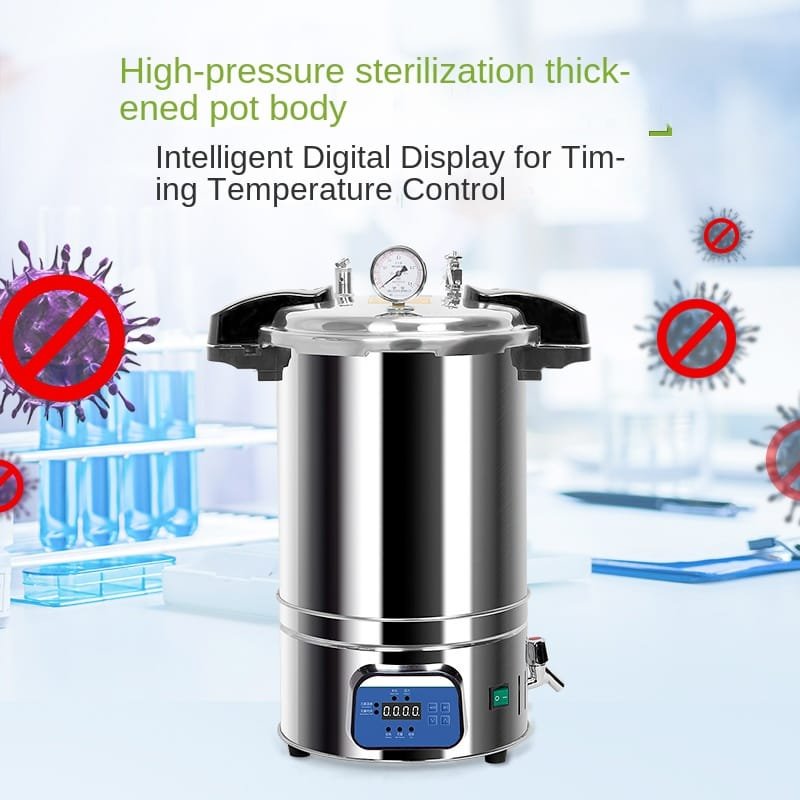
Cēlonis:
Nepietiekama tvaika ražošana.
Sildītāja darbības traucējumi.
aizsērējušas tvaika līnijas.
Risinājums:
Pārbaudiet ūdens līmeni un, ja nepieciešams, papildiniet to.
Veiciet sildelementa pārbaudi un nomainiet to, ja konstatējat defektu.
Notīriet visus aizsērējumus tvaika padeves līnijās.
Cēlonis:
Bojāts spiediena mērītājs.
aizsērējis ventilācijas vai drenāžas vārsts.
Kameras pārslodze.
Risinājums:
Kalibrējiet vai nomainiet manometru.
Regulāri tīriet ventilācijas un iztukšošanas vārstu.
Izvairieties no pārslodzes un nodrošiniet pareizu tvaika cirkulāciju.
Cēlonis:
Bojāta durvju blīve.
vaļīgi vai nolietojušies blīvējumi.
Nepareizi aizvērtas durvis.
Risinājums:
Pārbaudiet durvju blīvējumu un, ja nepieciešams, uzlieciet jaunu.
Pievelciet vai nomainiet nolietotās blīves.
Pirms cikla sākšanas pārbaudiet, vai durvis ir pilnībā aizvērtas.
Cēlonis:
Nepareizi temperatūras vai spiediena iestatījumi.
Kameras pārslodze.
Gaisa kabatas kamerā.
Risinājums:
Pārbaudiet un mainiet gan temperatūras, gan spiediena iestatījumus.
Samaziniet materiāla daudzumu kamerā, lai nodrošinātu pareizu tvaika cirkulāciju.
Izmantojiet vakuuma ciklu, lai likvidētu esošās gaisa kabatas.
Cēlonis:
Elektroinstalācijas problēmas.
Sensoru kļūmes.
Programmatūras darbības traucējumi.
Risinājums:
Pārbaudiet strāvas padevi un savienojumus.
Pārbaudiet un nomainiet bojātos sensorus.
Nepieciešamības gadījumā restartējiet autoklāvu sistēmu vai atjauniniet tās programmatūru.
Autoklāvu problēmas var samazināt līdz minimumam, veicot regulāru apkopi un nekavējoties risinot problēmas. Izpratne par parastajām problēmām un to risinājumiem ļauj lietotājiem saglabāt autoklāvu veiktspēju un pagarināt tā funkcionēšanas laiku. Lietotājiem jāiepazīstas ar ražotāja rokasgrāmatu, lai saņemtu detalizētus norādījumus, un sarežģītu remontdarbu gadījumā jāmeklē profesionāla palīdzība.
Problēma rodas vai nu nepietiekama ūdens līmeņa, bojāta sildelementa, vai arī pārmērīgas slodzes dēļ autoklāvā. Pārbaudiet šos faktorus un, ja nepieciešams, noregulējiet.
Lietotāji var veikt nelielus uzdevumus, piemēram, tīrīšanu vai blīvju nomaiņu, bet sarežģītus remontdarbus ir jāuztic kvalificētiem tehniķiem.
Regulāri pārbaudiet sterilizācijas efektivitāti, izmantojot bioloģiskos rādītājus, kas pazīstami kā sporu testi.
Pārbaudiet lietotāja rokasgrāmatu, lai uzzinātu konkrēto kļūdas kodu, un izpildiet norādītos traucējumu novēršanas soļus. Ja problēma nav novērsta, sazinieties ar tehniķi.
Ik nedēļu veiciet autoklāvu kameras un blīves tīrīšanu, kā arī drenāžas vārsta tīrīšanu, lai bloķētu uzkrājumus un saglabātu maksimālu veiktspēju.
Rakstā sniegta plaša rokasgrāmata par to, kā identificēt un risināt bieži sastopamas autoklāvu problēmas, kas palīdz lietotājiem saglabāt efektīvas sterilizācijas sistēmas. Lūdzu, informējiet mani, ja vēlaties turpināt nākamo rakstu.
Kāpēc autoklāvs ir labākā sterilizācijas metode